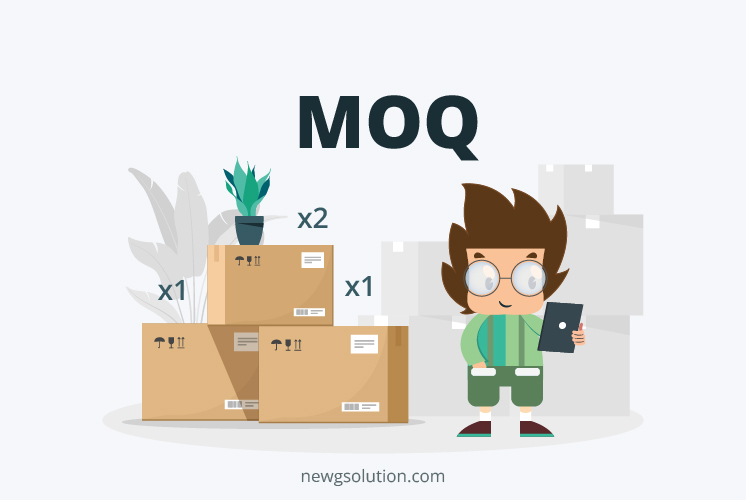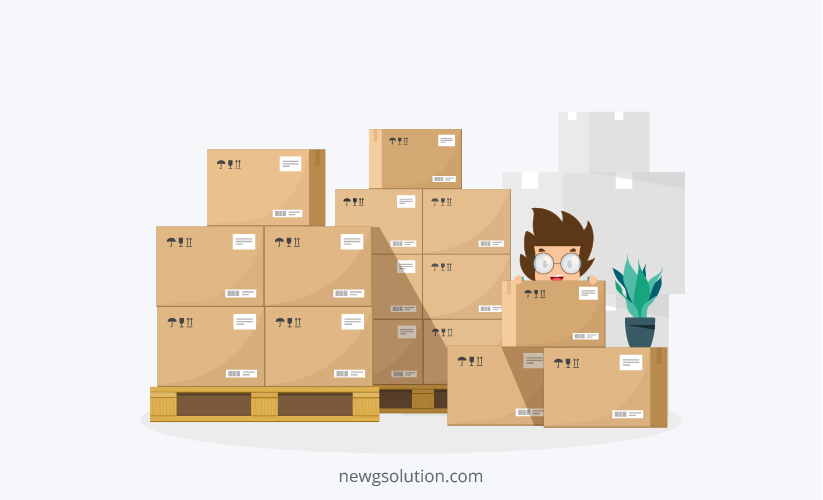Minimum Order Quantity: Meaning, Impact, And Benefits
Inventory Management
LAST UPDATE: APR 16, 2023
7 minutes reading
Have you established your online store and do you have any plans to expand it by selling wholesale products? if the answer is yes, then choosing your minimum order quantity, or MOQ can be a little intimidating. The initial cost of the goods is under pressure from a declining trend because manufacturing is a volume industry that undoubtedly involves transactions when producing things in quantity.
Before delving into the advantages and discussing the significance of Minimum Order Quantity, it is critical to understand the term’s actual meaning in the context of business, particularly when it comes to inventories.
What is Minimum Order Quantity (MOQ Meaning)?
The smallest quantity of goods that a supplier is willing to sell is known as the minimum order quantity (MOQ). The supplier won’t sell you a product if you are unable to meet the MOQ for it.
Depending on the product, all MOQs change. Low-priced things that are simple and inexpensive to create will typically have a lower MOQ than high-priced items that are more expensive to produce.
Why Is Minimum Order Quantity Important?
A minimum order quantity (MOQ) is necessary to maintain effective inventory control. Conserving money and storage space, enables operations to properly determine how much inventory is required and how much to sell.
The Reason Behind Suppliers’ Minimum Order Quantities (MOQs)
Like every business, suppliers are subject to a variety of expenses & limitations. At the end of the day, suppliers need to make sure they earn from each order in some capacity.
The supplier must still pay for shipping, holding, handling, and administrative expenses.
Frequently, a small portion of the order’s entire value is taken up by these overheads. However, these expenses reduce the profit margin more the smaller the order number.
What Should a Minimum Wholesale Order Be?
Most wholesalers set their MOQ requirements, such as $100, $500, or $1000, to protect their cash flow and mental stability. The term “Minimum Order Quantity” (MOQ) simply refers to the amount that must be spent by your merchant on each order for them to stock your goods at their establishment.
How To Set Minimum Order Quantity for Buyers
Depending on how the customer and seller are seen, different minimum order quantities may apply. For instance, buyers fulfill orders by their own inventory needs. Typically, they must shop around with different sellers until they discover the desired price. It’s crucial to occasionally consider alternative offers before placing your order. It would be great if you exercise caution when picking the correct source, nevertheless.
- To find out if a seller is trustworthy and verified, you should first thoroughly research each one.
- The next step is to determine whether they can best meet your MOQ requirements.
- Before making a final choice, read the reviews from previous customers.
The amount of inventory that has to be acquired can also be determined using the economic order quantity approach. The minimum order quantity is not a one-size-fits-all rule, so keep that in mind. In a cutthroat market, having a wide range of alternatives available to you allows you the freedom of choice.
For Suppliers
Your business’s cash flow, shipping costs, sales numbers, negotiation communications, and profitability will all alter drastically if you introduce a MOQ. Therefore, to create consistency within your organization, regardless of whether you are a retailer or a wholesaler, you need to set a minimum order quantity formula.
Try to convince a regular customer to accept the same quantity all at once, such as if they typically purchase 20 units of the same product every two months. Your orders will be recorded in the book and your cash flow will be stable as a result.
Maintaining high MOQs will help you operate your warehouse more effectively. Let’s say you routinely sell tiny quantities of things. You wind up paying more for shipping and staff time in this situation. Instead, if you can sell more things all at once, it will significantly cut down on the cost of packaging and shipping. You will appreciate the real savings.
3 Steps to Calculate Minimum Order Quantity (MOQ)
The minimum order quantity cannot be calculated using a precise formula (MOQ). Instead, it depends on unique elements including demand, a company’s size, geography, industry, and more. This implies that the Minimum Order Quantity can vary depending on the e-commerce seller (MOQ).
You must be wondering how to determine the Minimum Order Quantity (MOQ) for your company; listed below are some elements to take into account:
1. Predict The Demand
When determining Minimum Order Quantity (MOQ), inventory and demand go hand in hand; the higher the demand, the higher the Minimum Order Quantity (MOQ) can be, and vice versa. Utilizing previous sales data, it is possible to estimate demand for a product, which depends on the product’s kind, season, competition, and customer preferences.
The Minimum Order Quantity (MOQ) of a supplier should be close to your demand; it shouldn’t be too high so that you have unsold inventory and it shouldn’t be too low so that you constantly have to replace inventory, which raises costs.
2. The Expense of Holding
The term “holding cost” describes the price of keeping inventory in a fulfillment center or warehouse for online retailers. The cost increases as inventory are kept for a longer time. As a result, storing merchandise for a brief time is economical.
You can choose how much inventory can be kept within your budget by estimating your ecommerce warehouse costs. Include unique requirements like refrigeration, which raises the cost of holding merchandise, when calculating.
3. Analyze The Point of Break-Even
When the supplier’s entire costs and total revenues are equal, there is no net loss or gain, which is the break-even point. To prevent losses, the Minimum Order Quantity (MOQ) should never be less than your break-point. The Minimum Order Quantity (MOQ) of a seller should not, however, be so high that it compels customers to buy from another e-commerce vendor.
Benefits Of Minimum Order Quantity (MOQ)
Most MOQ wholesalers have a MOQ in place. While some wholesalers are successful by offering no MOQ to small firms, greater minimums enable you to charge the competitive pricing wholesale is known for. The following skills are among the benefits of MOQs.
- Maintain profitability: To break even or make a profit at such low costs, wholesalers must transact in significant volumes. You may ensure that all of your customers will be lucrative by establishing a minimum.
- Increase turnover: To fill large orders for so many customers, whether for raw materials or finished goods, a MOQ wholesaler must maintain enormous inventory levels. With a MOQ, you may increase inventory turnover while preventing products in huge quantities from going bad or losing value.
- Run on a built-to-order or custom-made company model: Some wholesalers create unique products. Instead of keeping finished goods in storage, they just produce the precise quantities required. It significantly reduces the cost of Multi/Warehousing. Every production run must, however, produce a large enough quantity of goods to pay the cost of manufacturing for this technique to be profitable.
Conclusion
The amount of money needed to launch a business is one of the largest obstacles. A minimum order quantity (MOQ) may preclude some companies from doing business with a manufacturer at all, but for some brands, a MOQ is frequently preferable over purchasing a lesser number of inventory at a higher per-unit cost (when you factor in the higher average cost over time as well as freight costs to account for the higher frequency of reorders).
The best minimum order number will differ amongst firms, and choosing the ideal benchmark needs extensive research, careful sales planning, and good fortune. Finding a suitable MOQ might enable you to expand your firm while maintaining profitability.
Find out more about how New G Solution can assist with fulfillment, storage, and inventory management.




Recent Comments